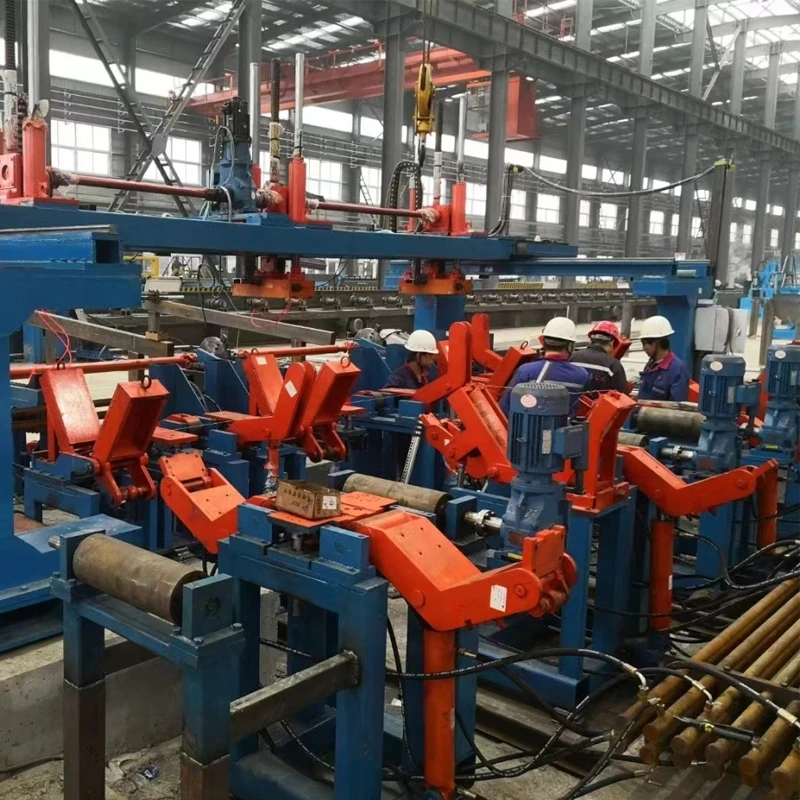Metal Straightening Equipment for Precision Alignment and Industrial Applications
The Importance of Metal Straightening Machines in Modern Manufacturing
In today’s fast-paced manufacturing environment, efficiency and precision are paramount. One of the critical processes that enhance product quality and fabrication speed is metal straightening, which is essential in various industries, including automotive, aerospace, and construction. Metal straightening machines play a pivotal role in this process, ensuring that metal components meet stringent specifications and tolerances.
What is Metal Straightening?
Metal straightening is the process of correcting the shape of metal parts that have become distorted during manufacturing, handling, or transportation. Distorted materials can lead to structural weaknesses, assembly difficulties, and compromised aesthetics, ultimately resulting in increased costs and production delays. Metal straightening machines eliminate these issues by accurately restoring the intended geometry of the metal pieces through controlled mechanical processes.
How Metal Straightening Machines Work
Metal straightening machines use hydraulic or mechanical force to apply a precise amount of pressure to bent or warped metal components. The equipment typically includes rollers, presses, and bending tools designed to deliver specific adjustments to the metal's shape. Depending on the machine's complexity, it may also feature digital controls and sensors that enhance accuracy and repeatability.
The straightening process generally involves the following steps
1. Assessment The operator inspects the metal component to determine the extent of deformation and the appropriate corrective measures. 2. Setup The machine is configured based on the specifications of the metal piece, including its dimensions and material properties. 3. Straightening The metal is placed in the machine, and the specified force is applied. This process may need to be repeated multiple times, with adjustments made to ensure the component is returned to its original form. 4. Quality Inspection Post-straightening, the component undergoes rigorous inspection to ensure it meets production standards.
Types of Metal Straightening Machines
metal straightening machine

There are various types of metal straightening machines tailored to specific applications and metal types. Some of the most common include
- Roller Straighteners These machines utilize a series of rollers positioned in a specific configuration to gradually correct the shape of metal sheets and strips. They are widely used in industries working with thin metal sheets, such as the automotive sector. - Press Straighteners Hydraulic or mechanical presses can exert significant force to straighten thicker metal components. These machines are especially useful for parts that require a high degree of correction. - Bending Machines While primarily designed for bending metal into specific shapes, many bending machines can also function as straighteners by applying the opposite force to correct warps.
Benefits of Using Metal Straightening Machines
1. Improved Quality Straightened metal components exhibit better fit and finish, enhancing overall product quality. This is particularly important in industries with stringent safety and performance standards. 2. Cost Efficiency By reducing waste and minimizing the need for rework or replacement of defective parts, metal straightening machines contribute to lower production costs.
3. Enhanced Productivity Automating the straightening process speeds up production times and increases overall manufacturing efficiency. Operators can focus on other tasks, knowing that the straightening process is being handled effectively by machines.
4. Versatility Modern metal straightening machines can handle a variety of materials, including steel, aluminum, and other alloys, making them a valuable asset in any metalworking shop.
Conclusion
Metal straightening machines are indispensable tools in contemporary manufacturing, facilitating the production of high-quality components with precise geometrical characteristics. As industries continue to evolve and demand more rigorous standards, the role of metal straightening will only become more critical. Investing in advanced metal straightening technology not only ensures compliance with quality benchmarks but also enhances operational efficiency, ultimately leading to greater customer satisfaction and industrial competitiveness. As manufacturers strive for excellence in their products, the importance of these machines cannot be overstated.
-
High Frequency Straight Seam Welded Pipe Production Line-BzZhou Xinghua Machinery Equipment Manufacturing Co., LTD.|Precision Welding, High EfficiencyNewsJul.30,2025
-
High Frequency Straight Seam Welded Pipe Production Line|BzZhou Xinghua|Precision Welding&EfficiencyNewsJul.30,2025
-
High Frequency Straight Seam Welded Pipe Production Line - BzZhou Xinghua|Precision Engineering&EfficiencyNewsJul.30,2025
-
High-Frequency Straight Seam Welded Pipe Production Line-BzZhou Xinghua Machinery Equipment Manufacturing Co., LTD.NewsJul.30,2025
-
High-Frequency Straight Seam Welded Pipe Production Line-BzZhou Xinghua Machinery Equipment Manufacturing Co., LTD.|Precision Manufacturing, High EfficiencyNewsJul.30,2025
-
High Frequency Straight Seam Welded Pipe Production Line-BzZhou Xinghua Machinery Equipment Manufacturing Co., LTD.|Precision Steel Pipe Manufacturing&Industrial EfficiencyNewsJul.29,2025


